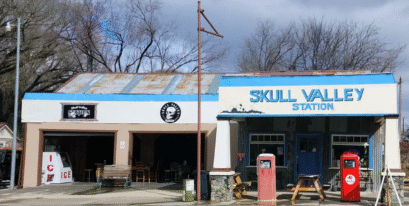 “Copper Basin” is a past producer porphyry cu deposit deposit discovered in 1890 in the Intermontane Plateaus of Arizona, The United States. It is a large deposit, located in the Copper Basin District mining district and is considered to be of world-class significance.1
“Copper Basin” is a past producer porphyry cu deposit deposit discovered in 1890 in the Intermontane Plateaus of Arizona, The United States. It is a large deposit, located in the Copper Basin District mining district and is considered to be of world-class significance.1
Copper, molybdenum, and gold deposits are documented at “Copper Basin.” Copper is present at a grade sufficient to have a strong effect on the economics of an excavation project. It may even be viable as the only commodity mined. Molybdenum can be economically recovered from this site but would have little effect on the viability of the mining project. The gold at this site is economically interesting but not currently recoverable.
This deposit has operated in the past as a small scale production but was closed at the time it was surveyed. There were no known plans to reopen it. A surface operation was at this site or proposed for it. The most important method or feature used in the discovery of economic minerals at this site was ore-mineral in place. Open Pit was the predominant mining method used at “Copper Basin”. Production at “Copper Basin” began in 1911. In 1961, production concluded.

A placer gold deposit area located North of Copper Basin Wash, between Skull Valley and the Sierra Prieta. Started about the 1880’s. Reactivated about 1929. Placers were located all along Copper Basin Wash in the early 1930’s.
A plain slopes southwestward from an elevation of 5,500 feet at the base of the Sierra Prieta to 4,000 feet at the junction of Skull Valley and Copper Basin Washes. Most of this plain is floored with extensive deposits of gravel, sand, and clay, locally interbedded and mantles with volcanic tuffs and flows, but its easternmost one to three miles of width is a pediment that has been carved on granite. The whole area is dissected by many southwestward-trending gulches which are tributary to Skull Valley Wash.
The bedrock of the placers generally consists of cemented gravels, but, in certain areas relatively far from the mountains, it is hard clay. The gold-bearing gravels are made up largely of granitic sand together with various amounts of boulders and clay. The gold-bearing gravels form a relatively thin mantle on the ridges, but range in thickness from 3 or 4 feet up to 15, or more, feet in the gulches. The richest streaks are generally near bedrock. The gold is 925 to 950 fine.
